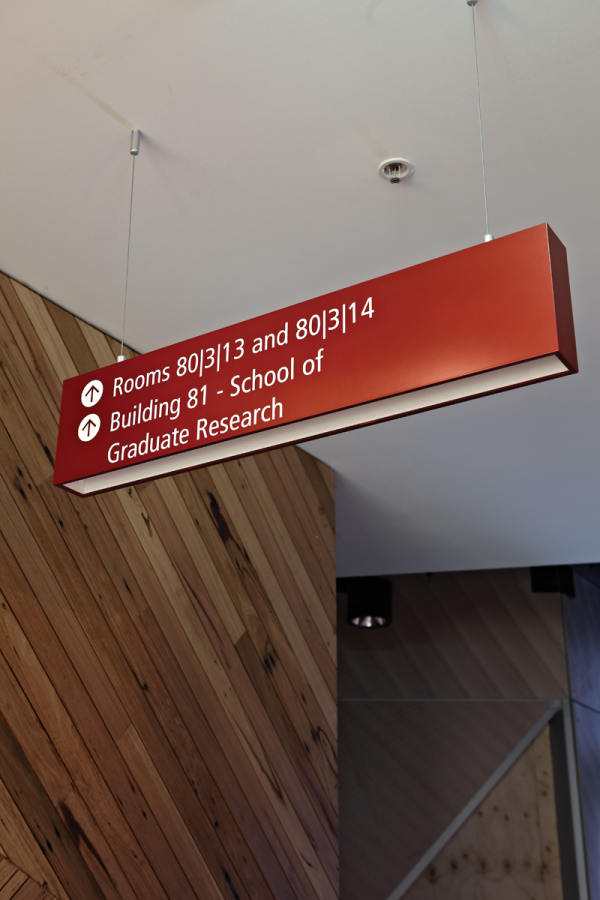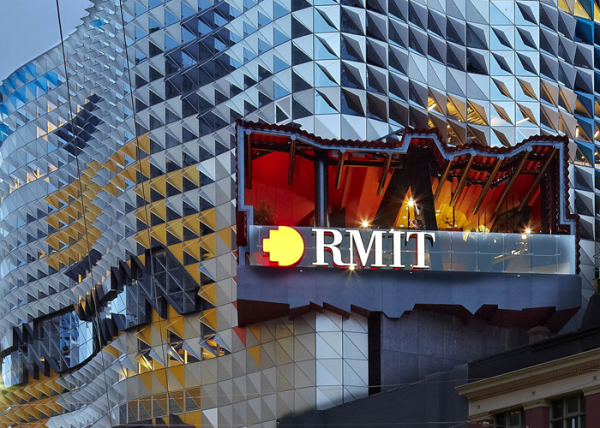







Image Credit : Fraser Marsden

Project Overview
Büro North collaborated with Lyons Architects to deliver the signage and wayfinding for the new RMIT Swanston Academic Building in Melbourne’s CBD. The $200m teaching facility now houses the College of Business and will undoubtedly redefine the built pedagogy of tertiary education.
Project Commissioner
Project Creator
Team
Soren Luckins
Jess Caffin
Tim Dow
David Williamson
Project Brief
Working closely with the Architects, we aimed to build on the current RMIT standards to create an innovative and world class solution that responds to the incredible interior of the building. The Lyons interior afforded a rich plethora of materials, finishes and forms for the design team to draw reference from.
Project Need
The ribbon-like signage forms mimic the traffic flows within the space and responds to the key destinations in each area. The resulting signage is organic, functional and representative of the way people will move around each level in order to reach their destinations.
To improve accessibility of the signed information the amenities pictograms and level numbers were given precedence. With large numbers being applied to the underside of the escalator landings and pictograms providing additional directional information.
In the case of escalator landings fonts was customised so that the perspective is oriented for traffic flow moving up the building. To keep building and faculty relevant to the industry the main entry sign was designed as an LED Ticker tape sign displaying real time stock exchange information.
Design Challenge
The floorplate of each level is unique, responding to the views out and voids within the space. In response to this, our design challenge was to develop an efficient and unique system to guide people around the spaces, while maintaining sightlines and keeping information clear, simple and legible.
Sustainability
The efficiencies made in the wayfinding strategy stage meant less physical signs were required overall. The application of vinyl on the signs meant they were easily updateable, so if changes were required, the lettering could be swapped our rather than the whole sign needing to be remade.
Wayfinding
This award celebrates creative and innovative design in the ways people orient themselves in physical space, and navigate from place to place. Consideration given to signage and other graphic communication, clues in the building's spatial grammar, logical space planning, audible communication, tactile elements and provision for special-needs users.
More Details

